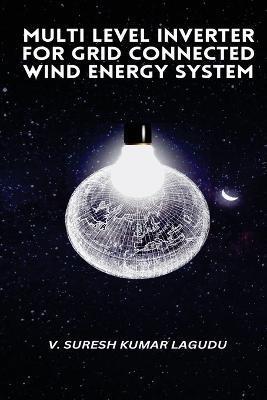Multi Level Inverter For Grid Connected Wind Energy System

Multi Level Inverter For Grid Connected Wind Energy System
An energy system is a structure of network consisting of energy sources, storage, transmission, distribution, and consumption of energy. The basic primary use of energy isfor transportation, heating, industrial and electricity sectors. These sectors are generallybased on traditional fossil fuels. However, the issues, challenges and causes are evolvingdue to severe climatic conditions prevailing in the world, and it is important to useenormous amounts of renewable energy systems to ensure carbon negativity byencouraging clean and green energy replacing fossil fuels with solar, hydro and windenergy systems.
Due to population growth, rapid rise in demand can be seen and to meet the demand, power generation must be correspondingly increased, and hence more renewable energysystems must be infused into the power grid to meet the rising demand for powergeneration. Over the past two decades, deregulation and transition towards the smart grid, leading to structural changes in the power grid, increased the complexity in the network.The power from injected renewable is intermittent in nature and hence it is unreliable.Due to this supply demand mismatch occurs leading to wide frequency oscillations in thesystem. However, owing to the complicated structure of the system, regulating the gridfrequency is a major control problem and sometimes it may also give rise to powerdisruptions. Among all the renewable energy sources wind energy sources have moredemand due to their availability. Presently, wind energy systems are integrated into thegrid through DFIG and back-to-back converters. As these converters operate at lowvoltages, an additional edge of reducing capital cost including protective devices, cost ofmaintenance, total harmonic distortion can be achieved. The back-to-back converterscomprise of two converters operating in rectifying and inverting modes respectively.In general, inverters are classified based on various characteristics like type of output, single-phase inverters (SPIs) and three phase inverters (TPIs), nature of input source, voltage source inverters (VSIs) and current source inverters (CSIs). The shunt capacitorat the input terminals reduces the dc ripple content particularly second harmonics whichare prone to harm the source. This leads to a smoother dc voltage. Though solid-statepower electronic switches, viz. IGBTs and MOSFETs have brought about significantmerits in control complexity, they produce harmonics which are quite detrimental to t
PRP: 235.60 Lei
Acesta este Pretul Recomandat de Producator. Pretul de vanzare al produsului este afisat mai jos.
212.04Lei
212.04Lei
235.60 LeiIndisponibil
Descrierea produsului
An energy system is a structure of network consisting of energy sources, storage, transmission, distribution, and consumption of energy. The basic primary use of energy isfor transportation, heating, industrial and electricity sectors. These sectors are generallybased on traditional fossil fuels. However, the issues, challenges and causes are evolvingdue to severe climatic conditions prevailing in the world, and it is important to useenormous amounts of renewable energy systems to ensure carbon negativity byencouraging clean and green energy replacing fossil fuels with solar, hydro and windenergy systems.
Due to population growth, rapid rise in demand can be seen and to meet the demand, power generation must be correspondingly increased, and hence more renewable energysystems must be infused into the power grid to meet the rising demand for powergeneration. Over the past two decades, deregulation and transition towards the smart grid, leading to structural changes in the power grid, increased the complexity in the network.The power from injected renewable is intermittent in nature and hence it is unreliable.Due to this supply demand mismatch occurs leading to wide frequency oscillations in thesystem. However, owing to the complicated structure of the system, regulating the gridfrequency is a major control problem and sometimes it may also give rise to powerdisruptions. Among all the renewable energy sources wind energy sources have moredemand due to their availability. Presently, wind energy systems are integrated into thegrid through DFIG and back-to-back converters. As these converters operate at lowvoltages, an additional edge of reducing capital cost including protective devices, cost ofmaintenance, total harmonic distortion can be achieved. The back-to-back converterscomprise of two converters operating in rectifying and inverting modes respectively.In general, inverters are classified based on various characteristics like type of output, single-phase inverters (SPIs) and three phase inverters (TPIs), nature of input source, voltage source inverters (VSIs) and current source inverters (CSIs). The shunt capacitorat the input terminals reduces the dc ripple content particularly second harmonics whichare prone to harm the source. This leads to a smoother dc voltage. Though solid-statepower electronic switches, viz. IGBTs and MOSFETs have brought about significantmerits in control complexity, they produce harmonics which are quite detrimental to t
Detaliile produsului









